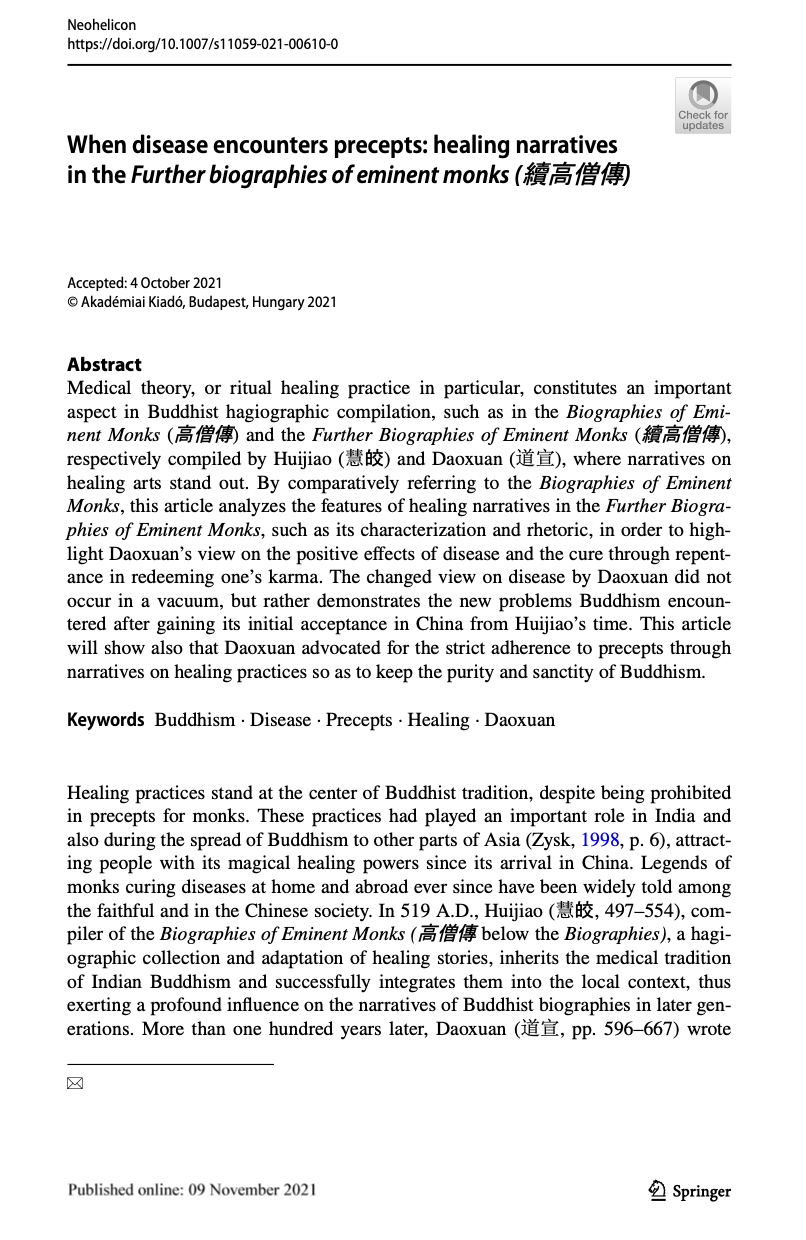国威《Neohelicon》2021年第2期
Abstract
Medical theory, or ritual healing practice in particular, constitutes an important aspect in Buddhist hagiographic compilation, such as in the Biographies of Eminent Monks(高僧傳)and the Further Biographies of Eminent Monks(續高僧傳), respectively compiled by Huijiao (慧皎) and Daoxuan (道宣), where narratives on healing arts stand out. By comparatively referring to the Biographies of Eminent Monks, this article analyzes the features of healing narratives in the Further Biographies of Eminent Monks, such as its characterization and rhetoric, in order to highlight Daoxuan's view on the positive effects of disease and the cure through repentance in redeeming one's karma. The changed view on disease by Daoxuan did not occur in a vacuum, but rather demonstrates the new problems Buddhism encountered after gaining its initial acceptance in China from Huijiao's time. This article will show also that Daoxuan advocated for the strict adherence to precepts through narratives on healing practices so as to keep the purity and sanctity of Buddhism.
